State Task Force Getting Closer to Identifying What Reparations Look Like
Antonio Ray Harvey | California Black Media
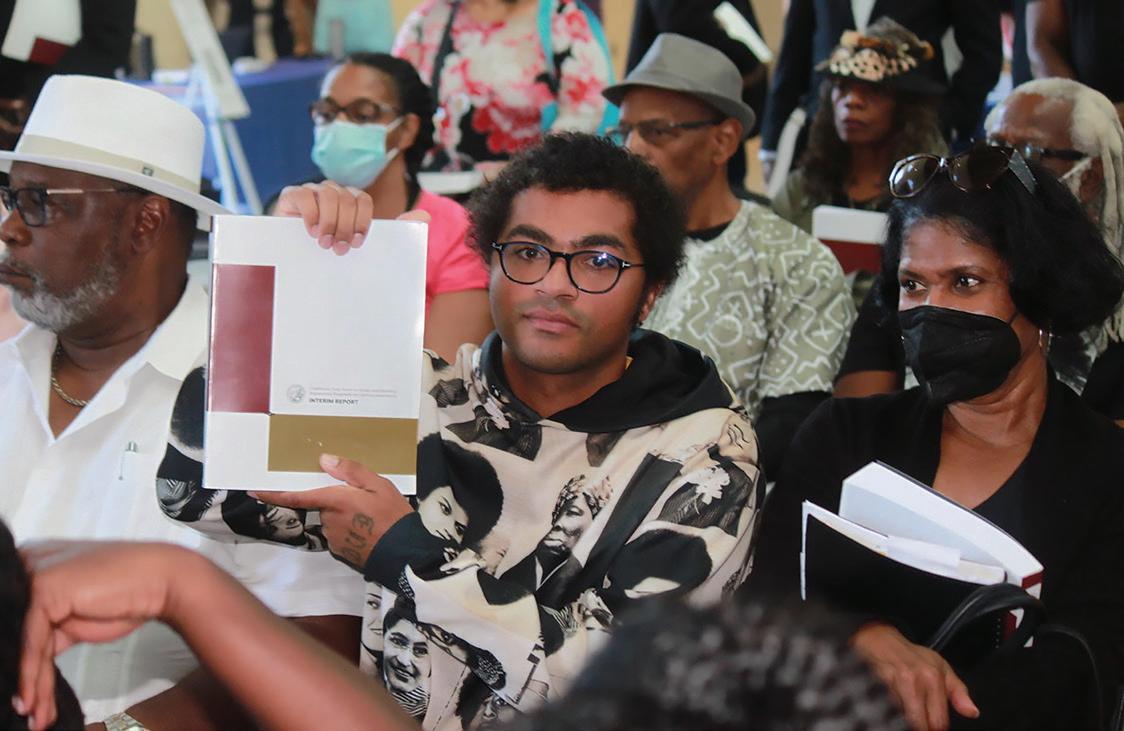
The California Task Force to Study and Develop Reparations Proposals for African Americans will be conducting its last meeting of 2022 on Wednesday, Dec. 14, and Thursday, Dec. 15, at Oakland City Hall Chambers located at 1 Frank H. Ogawa Plaza adjacent to 14th Street.
The start time is 9:00 a.m., for both days, beginning with one hour of public comment. The meetings will be live streamed via the official Task Force website or ETM Media on YouTube.
Task Force chairperson Kamilah Moore says that the next meeting is of high importance “for a few reasons,” and will include an in-depth conversation about redress and repair.
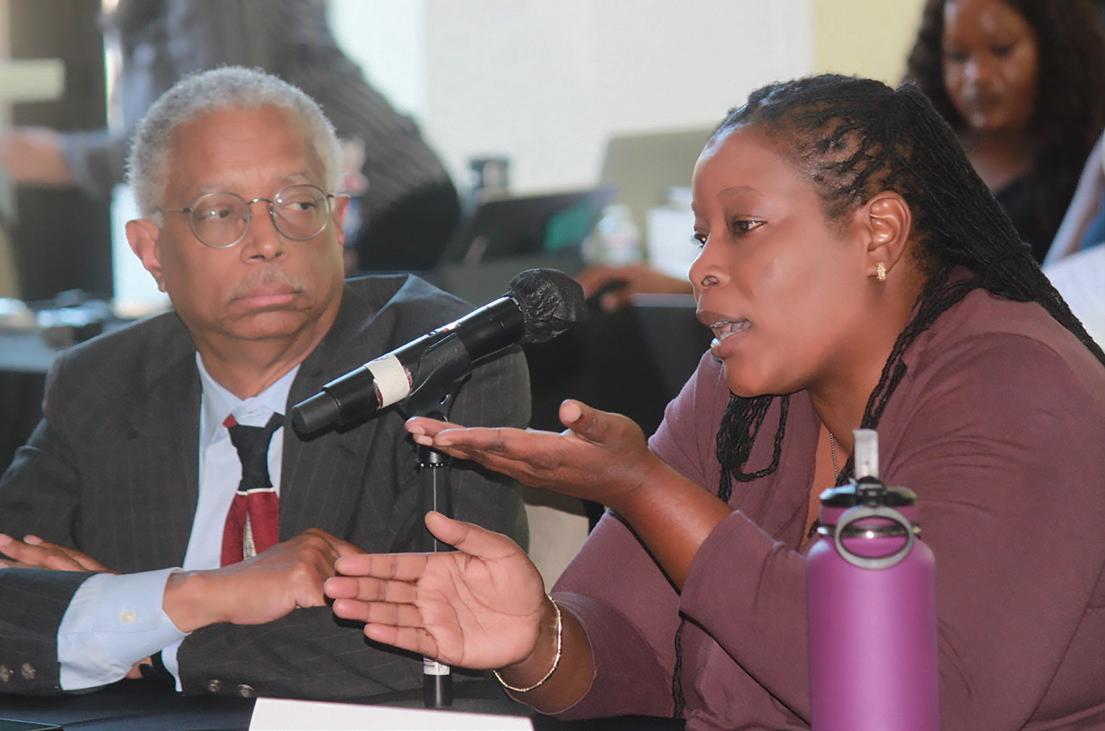
“No. 1, we will begin to
refine community eligibility standards (including residency requirements); No. 2, we’re inviting leaders from local/ municipal reparations efforts from across the state to share their incredible work (i.e., Oakland, Los Angeles, Berkeley, Russell City, Palms Springs etc.),” Moore said in a Dec. 1 written statement. “No. 3, it will be the first-time task force members will collectively discuss and begin to determine what types of reparation proposals will be in the final report that will be released in June 2023.”
The task force's two-year charge is scheduled to end in June 2023.
California’s AB 3121, signed by Gov. Gavin Newsom into
law in 2020, created the ninemember task force to investigate the history and costs of slavery in California and around the United States.
The law charges the Reparations Task Force with studying the institution of slavery and its lingering negative effects on Black Californians who are descendants of persons enslaved in the United States.
From the information they collect the Task Force will develop reparation proposals for African Americans and recommend appropriate ways to educate Californians about the task force’s findings.
After the Task Force decided who would be eligible for compensation in March, the
nine-member panel approved a framework for calculating how much should be paid — and for which offenses — to individuals who are Black descendants of enslaved people in the United States.
An expert panel reported to the panel in March that a “conservative estimate” of two million African Americans in California have ancestors who were enslaved in the United States. According to the US 2020 Census, there are about 2.6 million Black Californians out of a total state population of nearly 40 million residents.
The five-member expert panel, appointed by the task force, is
OPINION: Why High School Students Don’t Need the SAT Anymore
 By Akil Bello and Harry Feder | The AFRO
By Akil Bello and Harry Feder | The AFRO
demographics and the impacts of the pandemic — have changed the normal calculus of college admissions.
Some colleges have seen significantly more applications, some haven’t. Some families and students feel less certain about the advantage that a high test score provides, some are thankful that they don’t have to worry about testing. Some test prep businesses are worried about fading clientele, some are grateful to see the end of overtesting and test misuse.
by testing, minimizing the role of tests in admissions gives a sense of relief.
“There was a misconception that the number you get determines where you’d go to college,” said Star-Angel Oppong, a senior at Freedom High School in Virginia, who is currently applying to colleges. “The test instilled a lot of fear in me that I would not be successful without doing well on it.”
(Post 2) If Capitol rioters had been Black

Remembering the Role Race Played in the Capitol Insurrection
College admissions is undergoing a sea change. The pandemic accelerated the already fast-moving trend of colleges reconsidering the value of SAT and ACT scores in the admission process. Many colleges have stopped considering test scores at all (test blind/free) or have allowed students to decide whether they want to include test scores as part of their applications (test-optional).
While the change in testing policy seems new to some, this movement is more than 50 years old. Almost half of all bachelor degree granting colleges had adopted test-optional or free policies before the pandemic.
Spurred by the difficulty of access to testing due to COVID but also prompted — and certainly sustained by — research on the minimal value and detrimental impact of standardized tests, more than 700 colleges have adopted a test-optional or testfree policy since 2020.
Currently, more than 1,800 colleges (roughly 80 percent of bachelor’s degree-granting colleges) have test-optional or test-free policies for those applying in 2023. These colleges range from Hampton University to CalTech to Michigan State University.
New testing policies — combined with changing
Some college counselors are happy they can recommend their strong students but poor test takers to colleges that might have rejected them because of a lower test score, some bemoan the loss of a potential advantage for the students they serve that test above their in-school performance.
Change brings uncertainty. Change will benefit some and disadvantage others. In this case, those who have historically benefited from testing have been wealthy White males with college-educated parents, and these changing policies threaten that advantage. For those traditionally disadvantaged
Oppong says some adults in her life, both intentionally and accidentally, conveyed that a student who “didn’t do well on the test, they might as well not go to college at all.”
Test optional has changed that.
The widespread adoption of these policies has created more opportunity. Students who might have been deterred from applying to certain schools simply because of scores below the published averages of that school are now applying without worrying about scores.
Amily Sylla, a firstyear student at Virginia Commonwealth University, said, “It was a relief to not have to take a test and to not have the test be
The January 6, 2021 insurrection was about unsubstantiated claims of a stolen presidential election, rioters overtaking and vandalizing one of our nation’s most heavily secured buildings, threats to congresspersons who were inside the Capitol that day, and insufficient accountability for a U.S. President who incited violence and did far too little to swiftly extinguish it. On this one-year anniversary, we must also remember that the Capitol insurrection was about several racial realities in the United States.
It is important to remember who executed the assault on our democracy a year ago. No one at the Capitol was able to take official demographic stock of who the rioters were. But based on photos and videos from that day, few insurrectionists appeared to be people of color. The overwhelming majority appeared to be white. Most were white men. Our historical memory and analysis ought not focus only on what, how, and why, but also on who. Hundreds of white Americans were led to falsely believe an election had been stolen from them, and their violent response resulted in five deaths and the injuries of 140 law enforcement officers. They felt entitled to an election their candidate lost by nearly 7 million votes.
In addition to white entitlement, the insurrection was also about white privilege.
Miraculously, Capitol Police fatally shot only one rioter, Ashli Babbitt, as she and others attempted to force their way into the building. As we watched televised news coverage of the attack, several other black Americans and I immediately noticed the race of the rioters and we reached the same conclusion: had the insurrectionists been Black, many more of them would have been shot and killed. I vividly recall why we felt this way.
Just seven months prior, Americans (many of them Black) peacefully gathered outside the White House to protest the murder of George Floyd. The National Guard pushed and fired tear gas at
marched for black lives in June 2020. So why, then, was there not a heavier police or military presence on January 6? Probably because most of the people involved were white. Not being killed, or at least met with a significantly more militarized response, was a privilege afforded to the mob of predominantly white male protestors that day.
country
According to the U.S. Department of Justice, more than 725 people have been arrested for their participation in the Capitol Insurrection by the end of 2021; only 31 had been sentenced to jail. This also, therefore, makes January 6 about white accountability (or the lack thereof). According to Pew Research data, 77 percent of the current U.S. Congress is comprised of white members. Just imagine if a mostly Black group of rioters overtook the Capitol during one of their joint sessions, and the Vice President of the United States and all the lawmakers had to be urgently herded to a secure location.
Again, several other people of color (and some white people, too) remain convinced there would have been a massacre that day. And surely, far more than 31 of the Black survivors would have been immediately incarcerated and more harshly punished. There would have been far less gaslighting about what actually occurred that day, and much more bipartisan agreement on consequences.
Let us also remember the race of the president who incited this insurrection. He is white. Results from a recent survey shows that only 27% of republicans believe Trump bears a “great deal” or a “good amount” of blame for the January 6 attack (compared to 92% of democrats). Had President Barack Obama done any version of this, even with only 14 days left in his presidency, immediate action would have been taken to swiftly remove him from office and hold him significantly more
Power
it
will. Find out just what people will submit to and you have found
the
and
which will be
upon them and these will continue
they have resisted either with words or blows or with both. The
are prescribed by the
whom they suppress. —Fredrick
THE SAN BERNARDINO AMERICAN NEWSPAPER A Community Newspaper Serving San Bernardino, Riverside & Los Angeles Counties Volume 53 No. 34 December 08, 2022 Thursday Edition Mailing: P.O. Box 837, Victorville, CA 92393 Office: (909) 889-7677 Email: Mary @Sb-American.com Website: www.SB-American.com “A Man In Debt is So Far A Slave” R.W. Emerson Scan QR Code to visit our Website continued on page 4 continued on page 6 continued
concedes nothing without a demand. It never did and
never
out
exact amount of injustice
wrong
imposed
till
limits of tyrants
endurance those of
Douglass (1849)
on page 3
Shaun R. Harper Diverse (Issues in Higher Education) Jan 6, 2022
them as President Trump walked through the crowd to a church where he posed with an upsidedown bible. A heavy police presence also awaited others across the
who
For many qualified students, optional testing policies relieve a major application barrier. (Photo: iStockphoto / NNPA)
Milagro Jones, a participant at the Reparation Task Force meeting in Los Angeles, holds up a 500-page interim report that was submitted to the California legislature in June 2022. CBM photo by Antonio Ray Harvey. Sept. 23, 2022
Economic experts for the California Reparations Task Force Dr. Kaycea Campbell, right, and Williams Spriggs, left, explain to the 9-member panel in Los Angeles that the group has "rough estimations" for five harms that could be used to determine compensation. CBM photo by Antonio Ray Harvey. Sept. 23, 2022
The Neighbors United Political Action Committee Hosts Annual Fundraiser
By Ellen Turner


Naughty or Nice
Santa Claus made his first appearance for the season at the tree lighting ceremony December 1st in Fontana.
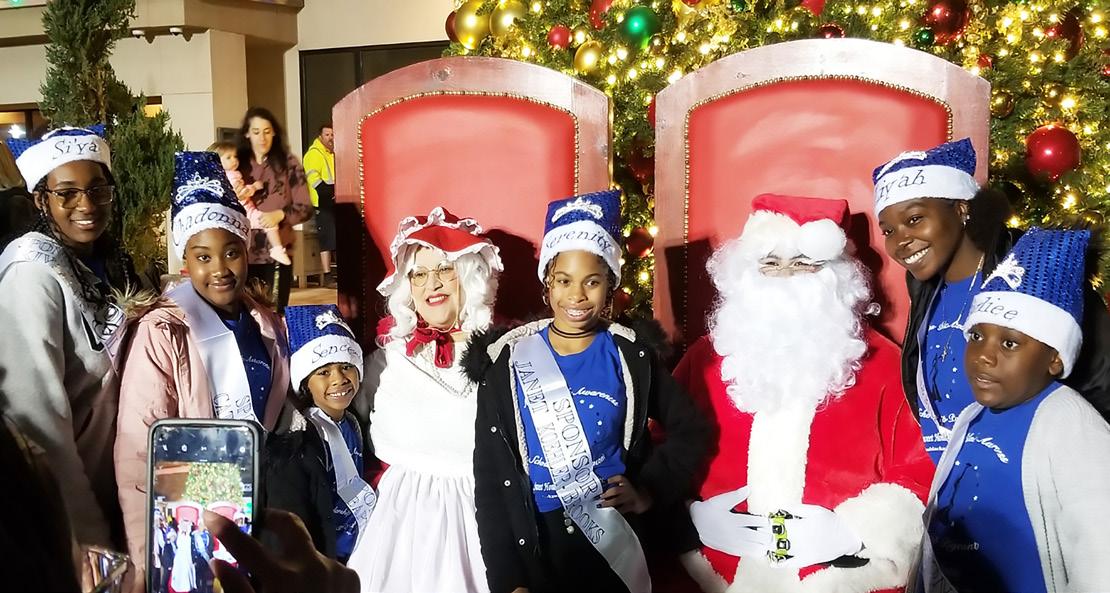
Naughty or Nice the Miss Black Awareness Pageant contestants finalists all talked to Santa and told him what their Christmas wish were. "I overheard the contestants telling Santa that they wished everyone would come and support the pageant on December 17th".
Doors open at 5:00 p.m., Cypress Neighborhood Community Center in Fontana, a souvenir book and photo is included. Donation are $20 in advance and $25 at the door. Advanced tickets are available, Zelle and/or PayPal (Concerned Citizens for the Development of North), and cash app ($Unity in CommUNITY).
For more information (909)333-9950
Black Psychologists Are Absent in Public Schools

 By
By


honorees are as follows:
The Neighbors United Political Action Committee(NUPAC.) based in Fontana, California sponsored their annual fundraiser that raises money in support of African-American Democrats, who seek local offices. They were founded in August 2019, and have raised over $30,000 these past two years. Every month each member deposits $25 into a bank account, in an effort to save up for each election cycle.
They also interview eligible candidates and award the raised campaign contributions to the different candidates.
This years’ holiday luncheon was held Saturday, November 19, 2022 at the Pomona Mining Co. Restaurant. This year’s keynote speaker was Judge Glenda Hatchett. There were 7 honorees who were recognized for their contributions to the Inland Empire.

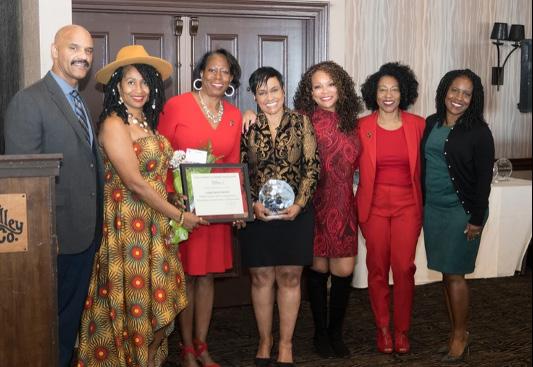

Judge Glenda Hatchett, Excellence in Social Justice Award
Dr. Robin McMillon, Excellence in Education Award
School Police Chief Lee Powell, Excellence in Public Safety
Linda Hart, Excellence in Healthcare Jacquetta Green, Excellence
Tamara Ellison, Excellence in Faith and Spiritual Leadership
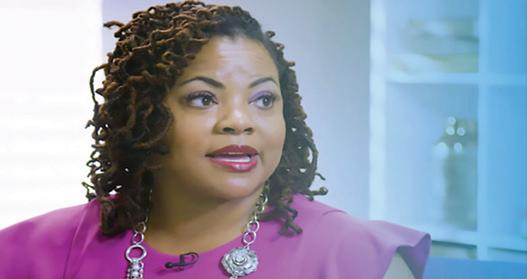



J. Boykin, Excellence in the Arts
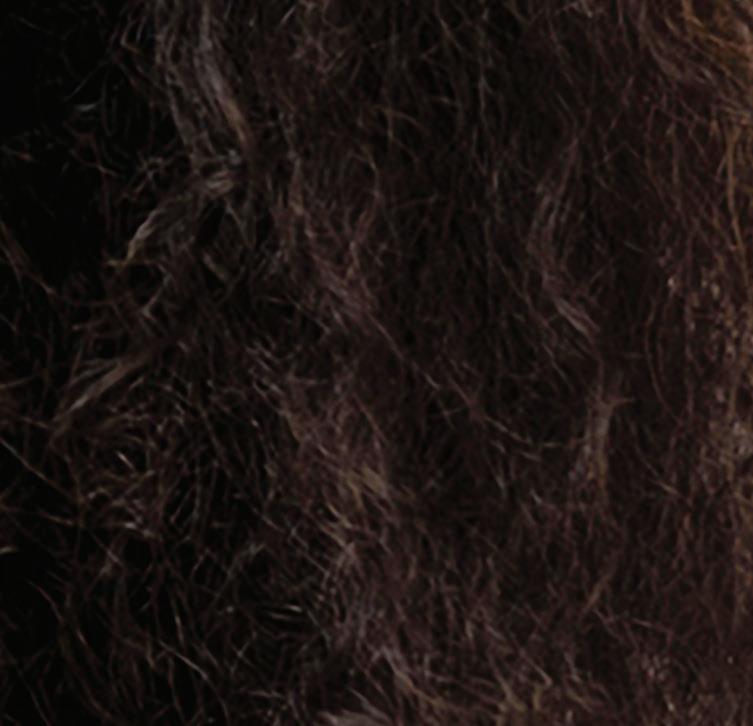



Judge Glenda Hatchett delivered a keynote speech that received a standing ovation from the luncheon attendees.
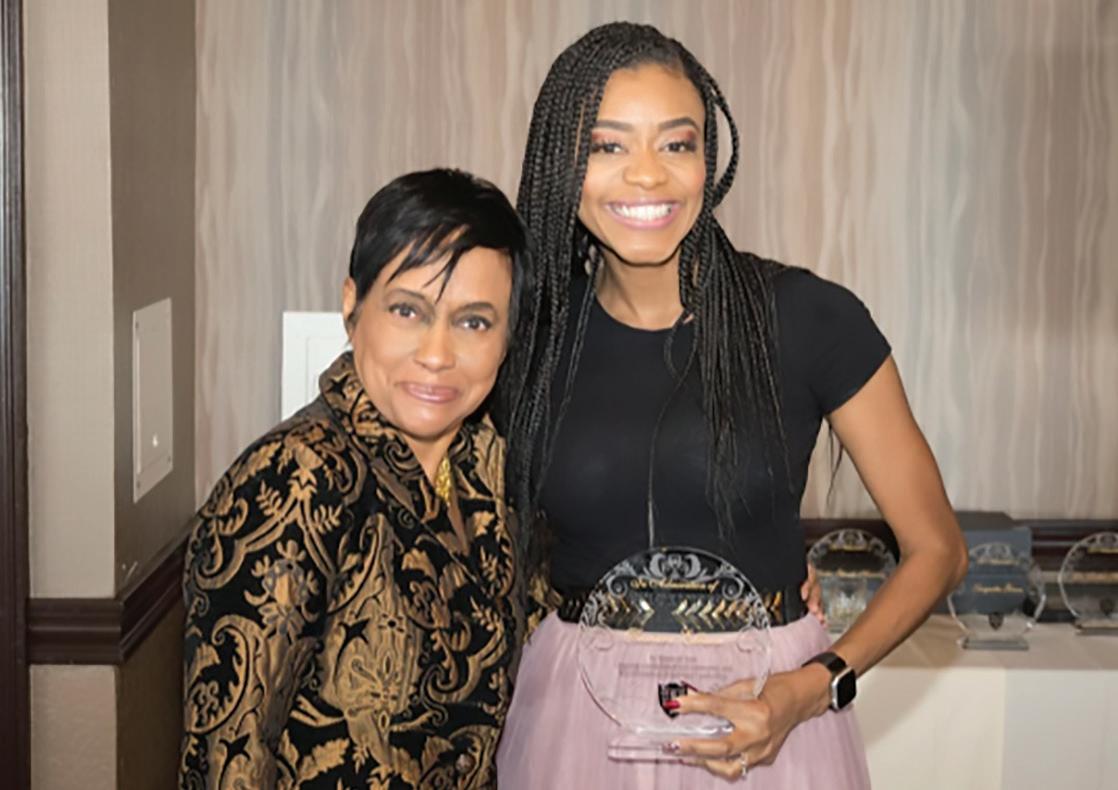
For more information about Neighbors United visit www. nupac.org.
Dr. Jameca



Jr. | St. Louis American | Word
In Black
Psychology program. All-in-all, Cooper has been in the profession for about 20 years.
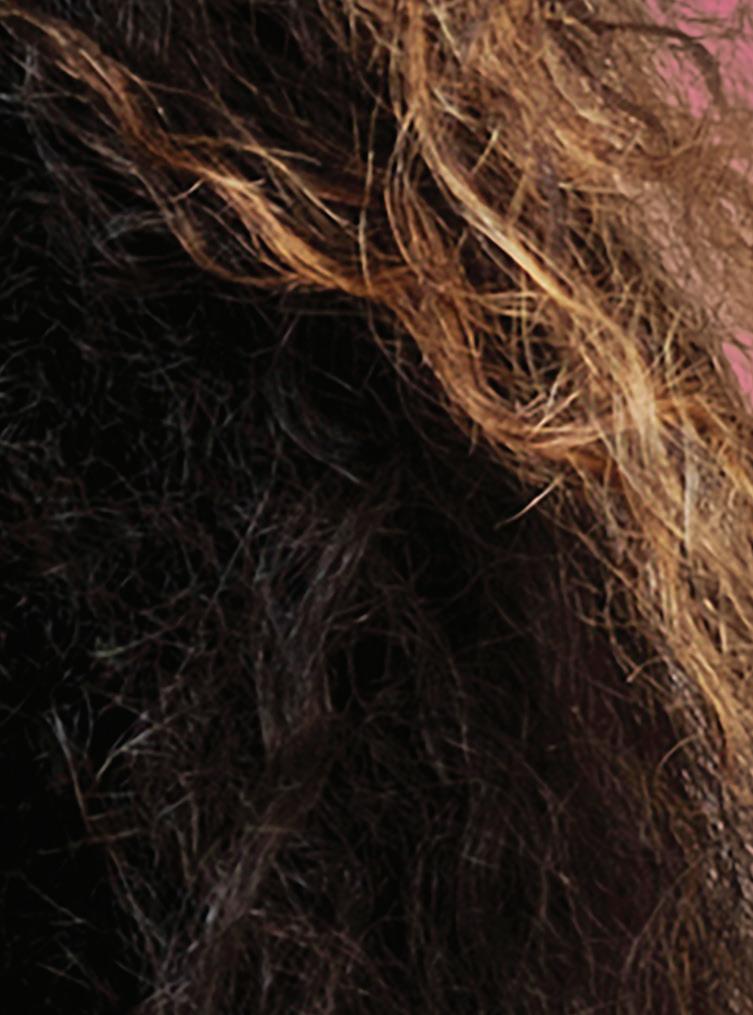
(WIB) – Dr. Jameca Woody Cooper is a licensed psychologist with a practice, Emergence Psychological Services, in Clayton. She’s the director of Webster University’s psychology program and is the director of the school’s Applied Educational
Cooper is a rarity in her profession. According to the US Census Bureau, 82% of psychologists in the United States are white, and only 5% are Black. Cooper also has another concern: The lack of Black male psychologists in schools locally and nationwide.




“I think some of the educators in the area should be interested and concerned for a couple










Page 2 Thursday, December 08, 2022 COMMUNITY/EDUCATION/ADVERTISING
Community/ Education News continued on page 7
The
in Community Service
The young finalist from left to right: Si'yae Purnell , Chadonna Dixon, Sencerity Tim's, Serenity Tim's, Liyah Belvin & Kylee Brown.
NUPAC members Jason O'Brien, Sr., Tammy Martin-Ryles, Dr. Denise Sterling-King, Judge Glenda Hatchett, Shannon O'Brien, Cheryl Nichols and Kimberly Isaac.
NUPAC members Tammy Martin-Ryles, Dr. Robin McMillon, Judge Glenda Hatchett and Dr. Denise Sterling-King,
NUPAC members Tammy Martin-Ryles, Judge Glenda Hatchett, Linda Hart and Dr. Denise Sterling-King,
Judge Glenda Hatchett and Tamara Ellison.
Woody Cooper Photo courtesy of MedCircle
Sylvester Brown
Opinion - Truth Is: No Rodeo Animals Are Being Tortured in Los Angeles
Opinion - Truth Is: No Rodeo Animals Are Being Tortured in Los Angeles...continued
Excuse my directness, but I would ask: Is this what the Los Angeles City Council wants to do or intend to do, especially in the world we live in today?
The proposed ordinance is written so poorly that it would only allow some equipment to be used where the State of California specifically bans it to ensure animal safety. Although the confusion caused by this may help high-priced lawyers, it doesn’t help animals one bit.
to animal health and safety, about how all our rodeo equipment is used humanely all the time.
Blumenfeld’s actions of not educating himself to know the difference between truth and fiction lead me to ask, what the purpose of his agenda is, which is not the agenda of the majority.
State Task Force Getting Closer to Identifying What Reparations Look Like...continued from page 1
quantifying past economic injustices African Americans faced in the state and elsewhere, and determining what or how much compensation should be for Black people living in California.
be “exhausted” until they have received enough data to complete the process.

Blumenfield, the author of a motion that will ban rodeo and equestrian events in Los Angeles, says in plain English in a new ordinance in front of the City Council that I and people like me who participate in rodeo events practice “inhumane” treatment of animals.
He says in plain English that I and people like me “encourage aggressive behavior in animals and inflict injury, pain and suffering on animals.”
As a rodeo lover, I take these false allegations personally.
I do not participate in any of the activities harming animals that Blumenfield alleges.
Neither does Kanesha Jackson, a proud Black young woman who is a 5-time Bill Pickett
Invitational Rodeo (BPIR) All Around Cowgirl Champion, an 8-time BPIR Event Champion, and mother of an upcoming rodeo champion named Kortney Solomon. She is also a farm owner who breeds championship horses.
Neither does Tory Johnson, a proud Black man, ranch owner,
and one of our champion winners for many years. Or Krishan Adair, another proud Black woman and rodeo champion.
And neither did the cowhands in the Old West, where one in four were Black men. Nor Bill Pickett, the legendary Black cowboy, and namesake of my organization.
They, along with four generations of Black cowboys and cowgirls, inspire me and our audience to be part of the rodeo world. We have created a Black rodeo culture contributing to the history of the American West by practicing the sport of rodeo with affection towards the animals.
For the cowboy and cowgirl, the animals are their best friends.
The BPIR has created a culture our community is proud of, one which keeps kids off the street, inspires hard work and goal setting, and helps people to connect with themselves and their emotions through animals.
Blumenfield’s proposed ordinance, rooted in lies and misinformation about rodeo, threatens to take all these positive activities away from the community in Los Angeles.
In addition, the ordinance would ban the very equipment we use to train and assist our animals in the safest way possible, including lassos and flank straps – neither of which hurt animals in any way.
When you understand what the ordinance really does, you must ask why Blumenfield is pursuing it, after not bothering to obtain the facts and truth -- or to understand how we care for our animals or how our equipment is used.
He did not ask the most diverse coalition ever created in Western Sports, formed to help educate lawmakers on a sport they’re not familiar with, about how we care for our animals daily. He didn’t ask our veterinarians, who are professionally dedicated
The truth is often hard to find these days, and very few have regard for it. We implore the LA City Council to stand up for the truth and do what is right in recognizing they’re processing a harmful and unnecessary ordinance.
It is imperative that the City Council vote this ordinance down, or to make the changes outlined by the coalition for our elected officials, so that our community may continue to enjoy the culture and unifying sport of rodeo practiced humanely and aligned with California State law already on the books.
The City Council cannot ignore the will of the voters. Or the truth. Thank you for letting me speak it.
About the Author
Valeria Howard-Cunningham is President of the Bill Pickett Invitational Rodeo.
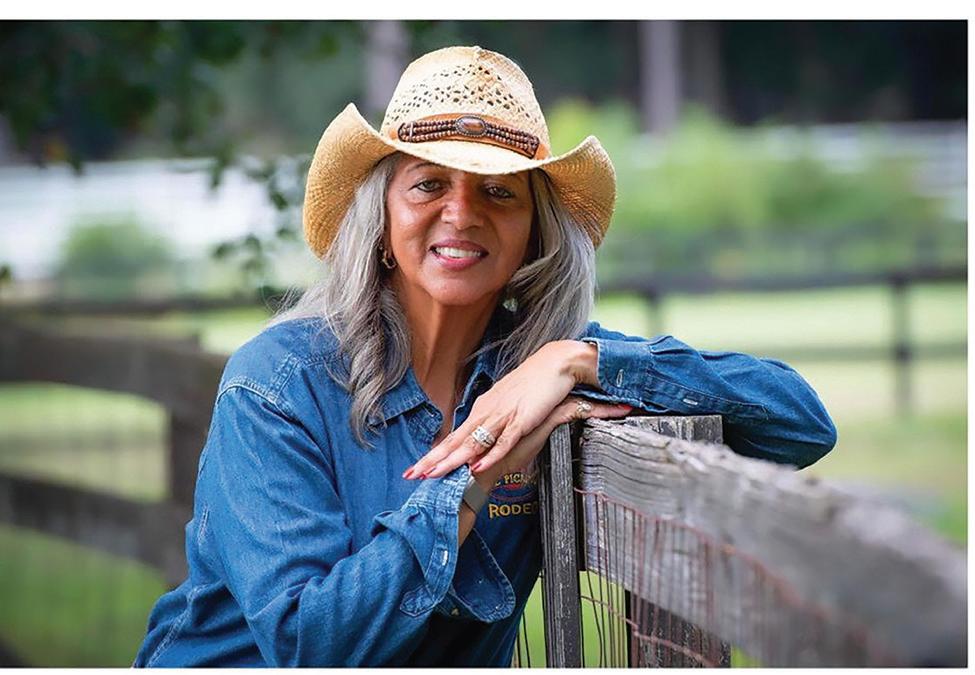
Subscribe online to The San Bernardino AMERICAN News and get your newspaper Weekly! ($59 a year) Visit our website: sb-american or Mail check or money order to: PO Box 837 Victorville, CA 92393
The expert panel includes Williams Spriggs (Chief Economist for the AFL-CIO and former Chair of the Department of Economics at Howard University), Thomas Craemer (Public Policy Professor at the University of Connecticut), and Dr. Kaycea Campbell (Chief Executive Officer for Ventana Capital Advisors and Associate Professor of Economics, Los Angeles Pierce College), Dr. William A. “Sandy” Darity Jr., (the director of the Samuel DuBois Cook Center on Social Equity at Duke University), and Kirsten Mullen, (a writer, and lecturer whose work focuses on race, art, history, and politics).
All five experts participated on the first day of the two-day meeting held at the California Science Center in Los Angeles two months ago. Spriggs and Campbell attended the event in person, while the other three experts appeared virtually.
Campbell and her colleagues discussed with the task force the “models” to provide a “road map” that would determine how reparations would be “paid and measured.”
The experts presented “five harms or atrocities” down from 13 they originally proposed, that could be used to determine compensations.
Campbell said the five categories under review will not
“This is not to say that other harms and atrocities are not important. As soon as, or if we get better data or more recent data, then we can in fact go through the process of what these look like,” Campbell said.
The experts made “rough estimates,” of unjust property taken by eminent domain, devaluation of Black businesses, housing discrimination, the disproportion of mass incarceration and over-policing, and health inequities as the major harms.
Task Force member Sen. Steven Bradford (D-Inglewood) released the following statement as clarification to the public that the Task Force has not proposed that the State compensate descendants of slaves with direct compensation for historical housing discrimination.
Bradford said, “Since its formation a lot of misinformation and willful misrepresentation of the work from the Task Force has been released. The fact is that the Task Force has not completed its work and has made no formal recommendations to the legislature. It’s important that we be deliberative and get this right because the nation is watching and it’s more than likely ours will be the model for all to follow.”
Members of the community and media are encouraged to visit the Reparations Task Force website and subscribe to the task force’s mailing list for updates at: https://oag.ca.gov/subscribe or call or call (213) 519-0504.
Page 3 Thursday, December 08, 2022 COUNTY/BUSINESS/FINANCIAL/ADVERTISING continued in next 2 columns Secure your family’s future— become a homeowner Owning a home is a great way to protect your family’s financial future. Union Bank® can help you find the mortgage that is right for you: • Discover down payment options as low as 3% • Receive down payment assistance grants from $9,000 to $12,000 with no payback of grant required1 • Take advantage of fast prequalifications2 • Enjoy competitive interest rates Call 877-498-3513 today to start building your legacy. ©2022 MUFG Union Bank, N.A. All rights reserved. Member FDIC. Union Bank is a registered trademark and brand name of MUFG Union Bank, N.A. unionbank.com Loans subject to credit and collateral approval. Not all loan programs are available in all states for all loan amounts. Terms and conditions subject to change. 1 Assistance provided is considered taxable income and will be subject to issuance of 1099-MISC to borrower. The borrower should consult their tax professional for any tax implications. 2 Not a commitment to lend. Prequalification is based on information provided by the consumer. Additional information must be submitted for review and approval. Union Bank NMLS ID #539249 V.I.P. TRUST DEED COMPANY OVER 40 YEARS OF FAST FUNDING Principal (818) 248-0000 Broker WWW.VIPLOAN.COM *Sufficient equity required - no consumer loans Real Estate License #01041073 Private Party loans generally have higher interest rates, points & fees than conventional discount loans WE BUY TRUST DEEDS We Purchase and Loan on Partial Interests* CA Department of Real Estate, NMLS #339217
Valeria Howard-Cunningham| Special to California Black Media Partners
Los Angeles City Councilmember Bob Blumenfield claims that I torture animals.
50 Years Ago, Patsy Mink, a Congresswoman Who Experienced Discrimination, Spearheaded Title IX
McKenzie Jackson | California Black Media
participation increased from 294,015 in the 1971-72 school year to 3.4 million in 201819 according to a study by the Women’s Sports Federation.
Participation has risen at the collegiate level — from 29,977 athletes at NCAA schools 50 years ago to 215,486 a in 202021.
the civil rights law.
“A lot of people associate Title IX with sports, but it’s really about all aspects of education,” Wu said. “It’s about admissions; It’s about scholarships; It’s about having a positive environment for women to be in school.”
Global Divisions, Political Scandals Can’t Diminish World Cup’s Enduring Appeal
By Peter White
play the game and — because so little equipment is needed — is part of soccer’s global popularity.

“It’s a sport for everybody,” he says.
Steve Prudholme traveled from Malibu to South Bend, Ind. for ten days last month to cheer on his daughter, Sophia, and her Notre Dame Fighting Irish women’s soccer teammates in the NCAA Women’s Soccer Championship.
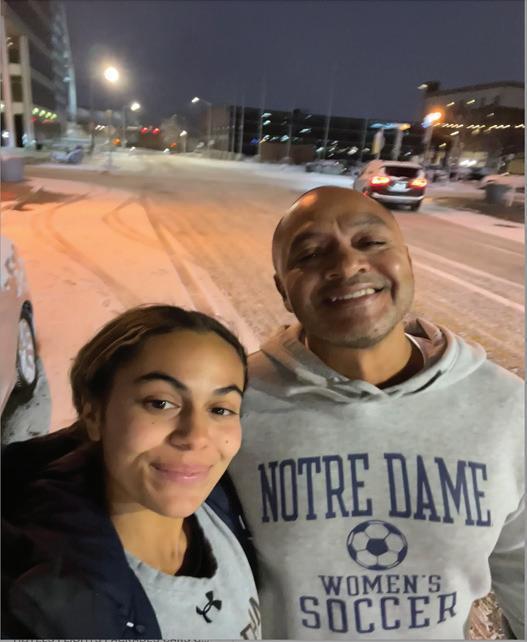
The younger Prudholme’s squad won three matches before being defeated, but her dad returned to the Golden State a happy father because his 19-yearold daughter is playing the sport she loves and getting a great college education.
“It makes me feel good to see her in that environment and also learning the trials and tribulations that sports teach you — especially from a female’s perspective,” Steve said.
The elder Prudholme said participating in sports allows Sophia to showcase her independence and strength of personality.
All of that is possible because of legislation championed by Democratic Congresswoman
Patsy Takemoto Mink of Hawaii.
Mink co-authored and spearheaded the Education Amendments of 1972, more commonly known as Title IX.
The law prohibits sex-based discrimination in any school or any other education program that receives monies from the federal government.
Title IX was signed into law by President Richard Nixon on June 23, 1972, and renamed the Patsy T. Mink Equal Opportunity in Education Act in 2002, after Mink’s death on Sept. 28, that year.
This week Mink would have turned 95. The tireless fighter for women’s rights and equity for everyone was born Patsy Matsu Takemoto in Paia, Hawaii Territory, on December 6, 1927.
Title IX ensures that young women are entitled to the same athletic chances as young men. It has been responsible for increasing the number of girls and women playing organized sports nationally.
Girl high school sports
The educational law has helped increase female enrollment in college. Women accounted for nearly 60% of all college students by the end of the 2020-21 academic year, and women were awarded 57% of the bachelor's degrees conferred. Additionally, women earn nearly half of all law and medical degrees. Title IX is also a framework for handling sexual misconduct complaints on campuses.
Mink, known as an educational trailblazer, who changed the politics of gender, called Title IX her one of her most significant accomplishments as a member of Congress.
“I take special pride in honoring its contributions to changing our view about women’s role in America,” she said.
Mink served in Congress in two stints beginning in 1965. A Japanese American, Mink was the first woman of color to be elected to Congress, four years ahead of Shirley Chisholm, the first African American women elected to Congress.
University of California-Irvine professor of Asian American Studies Judy Tzu-Chun Wu said Mink’s bouts with discrimination fueled her advocacy for Title IX against educational bodies that tried to exempt themselves from
Title IX turned 50 this year, so it and Mink have been the focus of celebrations nationally. A portrait of Mink was unveiled at the U.S. Capitol on the anniversary of Title IX’s signing by Nixon.
Speaker of the U.S. House of Representatives Nancy Pelosi called Mink an American hero during the spectacle.
“With this portrait, the extraordinary courage of Patsy Mink will be known to all who come to the Capitol,” Pelosi said. “Women and girls — and that's what I love about it — will know about her and that — her relentless fighting spirit. Patsy Mink made an enormous difference for women and girls in our nation.”
Many Americans don’t know about Mink’s championing of Title IX. “Women’s history is now more inclusive but there is still a tendency to celebrate the great white foremothers,” Wu said. “Sometimes Asian Americans are left out.”
Mink attended the University of Nebraska at Lincoln before graduating with a BA in zoology and chemistry from the University of Hawai’i in 1948.
While attending Nebraska, she was forced to live in a segregated dorm. She formed the Unaffiliated Students of
An estimated five billion people will watch the World Cup soccer matches, according to FIFA, the International Federation of Association Football. That’s more than half the world’s population.
And despite a slew of political scandals that have overshadowed this year’s games, they remain unique among global venues when it comes to leveling the playing field between nations.
“To me, it’s the best time in life that I could sit and watch soccer from all over the world,” says Charles Anchang, co-publisher of Immigrant Magazine, which focuses on the U.S. immigrant experience. “It was the only sport we could participate in as young kids. We used to make footballs out of rubber from tires so we could play.”
Anchang, a native of Cameroon, first came to the U.S. for the World Cup to watch the Cameroon national team in 1994. The tiny African nation has qualified for the FIFA World Cup eight times, more than any other African team.
“It put Cameroon on the map more than anything else has done,” Anchang said.
He was among a diverse panel of speakers during an EMS media briefing on the enduring appeal of “the beautiful game” and what it is about soccer — or football as it’s known worldwide — that makes it “the people’s sport.”
The people’s sport
Andrew Howonn Jo started playing in South Korea when he was ten. He was an active player for 12 years. A trained chemist, Jo returned to soccer and has been coaching kids in Alabama and Georgia for a decade.
Jo echoes Zenga, saying part of soccer’s appeal is the fact that it requires so little to play.
“With baseball, you need a bat and glove… soccer can be played anywhere,” he says, noting goals can be constructed from just about anything, including trash cans or a pair of stones.
Henrik Rehbinder, a former editor with the Spanish-language daily La Opiníon, grew up in soccer-crazed Argentina, home to one of the game’s most famous players, Diego Maradona, whose ascent from working-class roots to global stardom personifies soccer’s mythos as a great leveler.
“You have this addiction of playing, and you don’t require anything except a couple of people who have the same addiction,” says Rehbinder, 66, who now plays in an over-60 league.
“I thought that I was going to be one of the old ones… and I find myself with a goalie who’s 90 years old, and another one is 85. I feel like I’m a kid,” Rehbinder said.
Scandals amid the celebrations
Submission Deadline is Mondays By 5pm

(Post 2) If Capitol rioters had been Black...continued from page 1
accountable. There certainly would have been more bipartisan agreement among a congress that is three-fourths white about Obama’s culpability. We must remember that white presidential privilege, plus white entitlement, afforded Trump the ability to inspire chaos and violence without accountability.
On this first anniversary and for years into the future, we ought not erase the racial realities of the Capitol Insurrection. People of color cannot overtake a federal building because an election did not yield the outcome we wanted. Why so many white persons were allowed to do so must remain a question for our collective analysis as we continue making sense of the insurrection. Despite ongoing legislative attempts to deny America’s schoolchildren the truth about our nation’s racial history, we cannot teach them that January 6 was only about the ‘big lie’ of a stolen election. Citizens of all ages and across all racial groups deserve to understand the racialized double standard that was on full display for the world to see last January. Fairness and justice in our democracy requires us to acknowledge this double standard, learn from it, and actively resist future manifestations of it.
Dr. Shaun R. Harper is the Clifford and Betty Allen Professor at the University of Southern California and executive director of the USC Race and Equity Center.
“I grew up playing with the youth programs, then I played with the national team of Egypt and went to the Africa championship,” said Ehab Zenga, who now runs a soccer academy for youth and trains players for the semi-pro Anaheim Bolts in Los Angeles.
Zenga, who started playing at age nine, says he played barefoot as a child, noting this is how children in poorer nations often
Thirty-two teams qualified to play in the 2022 World Cup, winnowed down in qualifying rounds of FIFA’s six regional confederations that began in 2019. For every team that qualified there were three that didn’t make it. So just getting to play in the World Cup is a victory.
But FIFA has been rocked by several scandals involving graft and payoffs that won Qatar, not a big soccer power, the 2022 World Cup. In 2015, when FIFA President Joseph “Sepp”
the University of Nebraska for students of color who were prohibited from joining fraternities and sororities and the group succeeded in changing the university’s housing policies.
Mink’s ambition was to become a doctor, but being a woman of color, she was denied entry to 20 medical schools. She turned her focus onto earning a law degree and graduated from the University of Chicago Law School. In 1951 she married John Francis Mink, a graduate student in geology at the university.
She started her own law practice and became a lecturer at the University of Hawai’i after facing discrimination in her attempts to join a law firm.
Mink won seats in the territorial senate before Hawaii achieved statehood in 1959. In 1964, she became the first Asian American woman to serve in Congress. She won re-election five consecutive times.

Mink fought for equal rights and was against the Vietnam War and nuclear weapons. Her political leanings were steered by her background, Wu said.
“The society Mink grew up in was hierarchical in terms of class and race,” Wu said. “She experienced it in terms of gender. Those marginalizations shaped her desire to achieve equality.”
In 1976 Mink lost a bid for U.S. Senate. After serving as a member of the Honolulu City Council, she was re-elected to
Congress in 1990 and served until her passing. She was awarded the Presidential Medal of Freedom posthumously in 2014 by President Barack Obama.
Wu said Title IX increased gender equality, but it is not completely implemented the way Mink envisioned.
“There are still ongoing battles,” Mink said. “There has been gender revolution, but it’s not complete. If we compared women’s lives from the 60s and 70s to now it would be drastically different. But again, it’s not complete.”
Shortly after Mink’s death, Congresswoman Maxine Waters (D-CA-43), paying tribute to her friend at a Congressional memorial, reflected on a WNBA game the two women had attended.
“It was just a few months ago that I sat at the WNBA All Star Game where Patsy was honored for her 30 years of work,” Waters said. “As I looked at all of those strong, tall women out there playing and my dear child, Lisa Leslie, who won the All-Star honor that evening, I thought it was a short, little woman that caused this tall, big woman to be able to realize her dreams, to be able to hone her talents. What a wonderful moment that was.”
This Article was supported by funding provided by the State of California, administered by the California State Library.


Page 4 Thursday, December 08, 2022 LOCAL/NATIONAL/ADVERTISING
8
Visit us at https://dot.ca.gov/ or email smallbusinessadvocate@dot.ca.gov for more information Use cell phone camera to scan QR code above to access information about Caltrans upcoming opportunities INCLUDING MINORITY, WOMEN, AND DISABLED VETERANS CONTRACTING OPPORTUNITIES AVAILABLE FOR SMALL BUSINESS!
continued on page
continued in last 2 columns
Courtesy photo: Steve Prudholme of Malibu, visits daughter Sophia who is a soccer player Notre Dame.
Patsy Mink U.S. House of Representatives [Public Domain]
50 Years Ago, Patsy Mink, a Congresswoman Who Experienced Discrimination, Spearheaded Title IX... continued
Emancipation review
by Dwight Brown Film critic
It’s a miscalculation. This film is built around a former slave seen in a horrific photo whose back bore the scars of whippings and evil vestiges of slavery. Reimagining his life is a noble endeavor, but this is the wrong execution.

Aside from a brief interview and the short news article “Whipped Slave,” which was published in Harper’s Weekly Magazine in July 1863, little is known about the man in the iconic image. Conjecture and creative license fill in chapters that were never written.
Peter (Will Smith) is a slave in 1863, on a cotton/onion plantation in rural Louisiana. He’s whipped by an overseer, bullied for his defiant behavior, separated from his wife and children and sent to work on the railroads. Hearing that President Lincoln has issued the Emancipation Proclamation, Peter and other captives escape and head towards Baton Rouge seeking out Union soldiers who control the city. Chased for ten days by slave hunters and tracked by dogs through a labyrinth of bayous, his goal is
to find freedom and reunite with his family.
At a Union Army encampment, an interview records Peter’s ordeal, the names of his slave owners, the overseer and some details of his breakaway. During a medical examination, two itinerant photographers capture the protruding disfigurations on his back. His portrait is put on postcards, circulated and that vision horrifies and galvanizes abolitionists. Peter has a choice, work on a Union farm or join the Union army. He chooses the latter.
The tragedy of the real man’s story and his survival are worthy of a dramatization. The avenue chosen by the film’s producers and screenwriter Bill Collage (Tower Heist) is what may give discerning audiences pause. Peter’s tale is told in the action/thriller vein. It’s a genre director Antoine Fuqua has honed over his career with thrillers (Replacement Killers) and hero-worship action movies (The Equalizer). This might have been a good time for the
Caring for Babies, Caring for Families
Elizabeth Dilley
In Advent’s season of expectant waiting, this year I’m naturally thinking about babies. Jesus’ incarnation as a baby born to Mary. Happy, squalling babies who squirm in their parents’ arms. Tiny, born-toosoon babies who can’t endure too much touch each day. Babies born to a mama who’s sick or a dad who’s overeager or a nonbinary parent who’s thrilled. Babies placed in the care of other family members or the foster system. Babies whose parents must return to work before their bodies have healed from the labors of childbirth or their hearts have recovered from the wild family shift that always attends the presence of a new human.
Even Mary had some time of rest with Joseph’s family following Jesus’ birth—she didn’t hop up on the donkey to go back home right after Joseph had his (newly-expanded) family recorded in the census. But most families in the United States don’t even have that.
While the Family and Medical Leave Act of 1993 provides job protections to many people for up to twelve weeks of qualified leave every year, it does not require that employers pay their employees during that leave. According to the National Conference of State Legislatures, only eleven states require paid family and medical leave. This makes it unaffordable for many working people to take meaningful time off work in order to bond with a new child, heal from the physical rigors of labor, or care for a spouse who had been in labor.
not legally required. The United Church of Christ recommends twelve weeks of paid parental leave in its sample call agreement for clergy, though not all local churches follow this guideline; some churches expand this to include other forms of medical leave. But far too often, employers look at the law as the maximum for what they should do for their employees rather than the minimum. Horror stories abound of parents who drag themselves to work after a medically difficult birth, or who go back to work while their partner is still recovering from major abdominal surgery following a caesarian birth (commonly called a c-section). Even though studies show that a robust paid leave program benefits families and employers, only about twenty percent of workers have access to such a benefit.
This Advent, while we’re all awaiting the birth of Jesus, I hope we’ll give some thought to all the other babies being born this time of year (and at all the other times of the year, too), and to their families. What would it mean if among our wishes for these babies was a commitment to employment policies that supported their families so that they could begin their lives with more hope, peace, joy, and love to surround them?
Rev. Elizabeth Dilley serves as the Minister and Team Leader for the Ministerial Excellence, Support and Authorization (MESA) ministry team in the national setting of the United Church of Christ.
By: Lou K. Coleman-Yeboah Lou K. Coleman-Yeboah

Danger is lurking around the corner in disguise. The signs of the times are evident. This is critically needed information from Christ to you about the end times. I encourage you to read it, reread it, and read it again. Study it, think about it, and pray over it, being convinced that it will all take place. Jesus Christ is not lying. He is telling you the truth, the truth about the end-times that you need to know and believe.
There are forces of darkness that are aligned against us that seek to undermine the Kingdom of God in our lives. Satan has been at work for a long time. He is cunning, and he knows where we are vulnerable. He knows our weaknesses and where we are suspect. And he is patient. He just waits for the opportune time. Just like when the people of Jerusalem were rebuilding the walls, their enemies sought to catch them off guard. They planned to catch them by surprise when they least expected it. The enemy looked for an opportune time. If you don’t recognize this, then you are unprepared for what is to come. Anyone can tell you that this up-and-coming New Year, God is going to bless you, but who will dare tell you what God has already revealed. Let us not be fools. Wake-up!
Destruction is coming to this seemingly mighty fortress. “The year 2023 will be the beginning of the worst years of our life, filled with death, destruction, fear, and mayhem. It will be the year Satan and his puppets will appear with many empty promises, peace, and security, but in reality, it will be the yoking of humanity. Do not be fooled! Never in our lifetime have we experienced anything on the global scale like what is to come. Listen, I am not trying to frighten you, but in the next very
few short years, we are going to be experiencing things that are going to literally change our life in ways we have never dreamed or imagine, and you better be ready for it. We are looking at the obvious, but I want you to hear and see spiritually what’s going on. The war is more intense now. The battle is so real and has been going on for some time now, but we have been so consumed with ourselves that we have not seen the enemy. Wake-up!
The Antichrist is the future evil tyrant who will rule the entire world at Satan's behest just prior to Christ's return. The Bible tells us the spirit of the Antichrist, is already at work [1 John 4:3], setting the stage for the great End Times deception. What signs do we see today that expose this gathering cloud of deception? How are Satan and his Luciferian co-conspirators deceiving the world as they roll out the New World Order? It is time for you to pick up your Bible and start reading and studying it, and then praying to God for wisdom and revelation to see through the lies and deception that now dominate our culture. Everything we have been experiencing, it is all part of the great reset, and it is all driving towards the same outcome, preparing for the arrival of the Antichrist. This is an urgent call. Wake up and do it NOW! [Romans 13:11-14].
The word of the Lord came to me: “Son of man, speak to your people and say to them, If I bring the sword upon a land, and the people of the land take a man from among them, and make him their watchman, and if he sees the sword coming upon the land and blows the trumpet and warns the people, then if anyone who hears the sound of the trumpet does not take warning, and the sword comes and takes him away, his blood shall be upon his own head. He heard the sound of the trumpet and did not take warning; his blood shall be upon himself. But if he had taken warning, he would have saved his life. ...[Ezekiel 33:1-33]. They perish because they refused to love the truth and so be saved. [2 Thessalonians 2:10].
Certainly, some employers pay for such leave even if it is
OPINION: Why High School Students Don’t Need the SAT Anymore...continued
the reason why you didn’t get into college.” Having seen the challenges her sister faced the previous year preparing for and taking the SAT, Ms. Sylla was happy to forgo the preparation and testing process and spend her time focusing on more important things.
The smoother pathway created can be seen in data from Common App, the organization that runs a popular application by the same name used by over 900 colleges. Common App members have seen an increase in applications of more than 20 percent since the 2019-2020 application season, with the greatest increase coming from underrepresented students.
Even more dramatic than the growth in applications is the drop in scores submitted. In 2022, only 5 percent of Common App member schools required SAT or ACT tests to be submitted, and only 48 percent of applicants submitted scores.
But while these new policies decrease barriers for many, change can increase uncertainty. Some students and their supporters feel more uncertain about being able to predict the outcome of the admission process.
This nervousness is especially pronounced among those who have long relied on presenting test scores as the “key” to admissions and scholarships. Test makers, test prep companies, and independent college counselors have contributed to the anxiety by stoking fears, despite the assurances of colleges, that not testing creates a disadvantage in either admissions or access to scholarships, even at colleges that are test optional.
According to Ericka M. Jackson, Senior Director of Undergraduate Admissions for Wayne State University, “Many students and parents didn’t trust that they would really get a fair evaluation if they didn’t submit a test score. As college admissions offices, we spent
from page 1
a lot of time during that first test-optional admissions cycle explaining what test optional means at our institution and reassuring students, counselors, and parents that students would not be disadvantaged if they applied test optional.”
Since 2020, test publishers College Board and ACT have become particularly aggressive about marketing their tests as the key to “standing out” in the application process, suggesting that taking the test is intrinsic to securing admissions and “merit” scholarships.
But this narrative is misleading, if not outright false.
Candice Mackey, a college counselor at Los Angeles Center for Enriched Studies, said that “although all Cal-States and UCs are test-free, my students and families are ‘programmed’ for testing. It’s actually a little difficult at times to convince them otherwise that test-optional means optional.”
Making matters worse is the national media’s focus on highly rejective colleges, which make up less than 4 percent of colleges. News reports and prep company advertisements hyperfocus on scores as the reason for admission or rejection, even though these institutions almost always review applications holistically, considering many factors beyond test scores. This causes families to put undue misplaced pressure on testing.
Even in California, where public universities will not look at test scores even if submitted, the legacy of having required scores for 50 years casts a shadow on the current process. Mackey notes that “there is a lot of re-educating, explaining, and reframing what test-optional means and how testing factors into admissions.”
The confusion about how these policies play out in practice is evident in the lived experience
OPINION:
Why High School Students Don’t Need the SAT Anymore...continued
of applicants. Wendy Jefferies, a knowledgeable graduate admissions coach, and her daughter, now a first year at Indiana University, still struggled through what was essentially two parallel admissions processes, one with scores and one without.
Jefferies expressed the uncertainty that many families face. “We didn’t know what was good or bad as a test score,” she said.
Jefferies and her daughter, who had a 27 ACT score (better than almost 90 percent of test takers nationally) and a 3.5 GPA, decided to apply with testing to Historically Black Colleges and Universities (HBCUs) and without to Predominantly White Institutions (PWIs).
This strategy was largely informed by popular narratives that suggested that scores would provide access to scholarships at HBCUs in a way they would not at PWIs. After falling short of her target ACT score twice, Jefferies and her daughter decided not to spend any more time or energy on testing. Here’s how her student did:
Colleges are not only having to deal with the difficulty of educating a public used to submitting scores, but they are often having to adjust their internal policies as their applicant pools shift from 100 percent of students submitting scores to less than half doing so.
Jackson says several adjustments were made in their policy between the first and second test optional cycles based on feedback from applicants and counselors, saying her institution was “pleased and knew that the decision we made, along with hundreds of other institutions, was in the best interest of students and removed a significant barrier to higher education, which was the ability to test. However, we quickly discovered that offering a test-optional pathway wasn’t enough, at least not for the students we served (many of whom attended under-resourced schools) and who were physically separated from the support they used to have in school because they were all learning remotely.”
The return to school has been a boon for many high school students as they are reconnected with the place-based resources that had been more difficult to access during remote learning. But the variation in policies at colleges poses a challenge to even the best-resourced college counseling office.
“It is understandable that students (and parents) were confused by so many institutions with so many different testoptional policies,” Jackson said. Some were test-optional, others were test free or test-flexible.”
Seniors applying this year and next will need to keep monitoring college websites and fairtest.org to track evolving college policies. But applicants will also need to take colleges at their word about what is important in the process. Colleges are responding to research, the current
environment, and students’ needs and are updating their policies as necessary. This means there may be more tweaks in the coming years. College admission is moving away from what Mackey calls an ‘institution-centered” process.
For colleges and students alike, test-optional has been a “seismic shift,” according to Jackson. And Mackey points out that “entering year three of a mostly test-optional admissions cycle, my advisement with students and families in this particular area begins with the student first and their profile, followed by the institution second leading me to believe test-optional policy and practice is much more ‘studentcentered.’”
Of course, “student-centered” considerations do not relieve the pressure on applicants to meet other competitive admissions criteria for a given institution – grades, extracurriculars, and the like.
But for many qualified students, the optional policies relieve a major application barrier.
Unfortunately, until every college follows the lead of California and removes test scores from all parts of its process, students will still have to consider how and when to engage with testing and test preparation.
Students this year and in the short term will be well served to keep asking questions like: “Is the investment of time and/or money to prepare for this test worth it? Is it safe and useful to take the test?
And, does submitting my scores increase the likelihood that I’ll help my application or increase scholarship opportunities?
For students like Sylla, the answer was no. She felt her strong high school performance and activities more accurately reflected who she was and who she wanted colleges to consider.
Preparing for the SAT or ACT wasn’t worth her time, and not testing didn’t prevent her from getting great outcomes. Sylla says not only did she get admitted to VCU and get scholarships, but “I got a lot, actually.”
Akil Bello serves as Senior Director of Advocacy and Advancement at FairTest. He is a former test prep company CEO, an educator, and a nationally recognized authority on educational access.
Harry Feder is the Executive Director of FairTest. He taught history in New York City public schools at Beacon School and Urban Academy Laboratory High School for 22 years. Prior to that he was an attorney in private litigation practice.
The opinions on this page are those of the writers and not necessarily those of the AFRO or BlackPressUSA. Send letters to The Afro-American • 145 W. Ostend Street Ste 600, Office #536, Baltimore, MD 21230 or fax to 1-877-570-9297 or e-mail to editor@afro.com
This article originally appeared in The Afro.
MISSION STATEMENT
Page 6 Thursday, December 08, 2022 LIFESTYLE/ENTERTAINMENT/RELIGION NEWS WITNESS FOR JUSTICE #1128
continued in next 2 columns Clifton Harris /Editor in Chief Investigative Reporter sbamericannews@gmail.com Mary Martin-Harris / Editor Legal /Display Advertising (909)
Clifton B. Harris / Audio Engineering Editor Digital Online Banner Advertising (909)
The
A
The
continued on page 8
889-7677
889-7677
San Bernardino American News was established May 6, 1969.
legally adjudicated newspaper of general circulation on September 30, 1971, case number 15313 by the Superior Court of San Bernardino County.
San Bernardino AMERICAN News subscription rate is $59.00 per year. The San Bernardino AMERICAN News is committed to serving its readers by presenting news unbiased and objective, trusting in the mature judgment of the readers and, in so doing, strive to achieve a united community. News releases appearing in the San Bernardino AMERICAN News do not necessarily express the policy nor the opinion of the publishers. The San Bernardino AMERICAN News reserves the right to edit or rewrite all news releases.
“Wake-Up – Please, Wake-Up!”
Study Reveals Barriers to Mental Health for Black and Latina Women
 Maxim Elramsisy | California Black Media
Maxim Elramsisy | California Black Media
greater equity in the provision of mental health care.

Black Psychologists Are Absent in Public Schools...continued
reasons,” Cooper explained.
A poll of Black women and Latinas across California sponsored by Black Women Organized for Political Action (BWOPA) and Hispanas Organized for Political Equality (HOPE)® found that 77% are experiencing some form of discrimination due to “personal characteristics,” including race or ethnicity, assumptions about income or education, and/or physical appearance.
“We have known that racism and discrimination take a toll on the mental health of our communities, and now we must factor in the disproportionate and lingering effects of the pandemic on communities of color,” said LaNiece Jones, Executive Director of BWOPA.
“What matters now is that we don’t sweep these added challenges aside but treat these barriers in mental health care for what they are, a crisis in care that must be urgently addressed,” Jones added.
The historic poll was conducted by Los Angelesbased public opinion research firm EVITARUS.
Responses were recorded from 800 Black and Latina women across California and the finding give insights about the most important concerns that they face with their families, accessibility of mental health services, preferences for providers, and priorities for approaches to create
Experts widely agree that the COVID-19 pandemic triggered an unprecedented global mental health crisis. People of color, young people, women, and those with low incomes are most at risk of mental health challenges before and after the pandemic, compounded by the added weight of a heightened economic crisis and instability, as well as more visible expressions of White Supremacy, anti-Blackness, antiimmigrant sentiment and hate crimes aimed at communities of color.
The current social and economic climate creates a distinctive set of pressures on Black women and Latinas.
Thirty-four percent cite finances or issues related to inadequate income as the top concerns facing their households. Safety, health, and housing also rank as chief concerns.
More than 3 in 5 respondents reported having a mental health concern for which they did not seek care from a provider. They attributed this to various barriers, citing travel expenses, length of travel time to appointments and inability to take time off work.
Women without coverage for mental health services, those with mental health conditions, younger women, and those covered through Medi-Cal reported the highest rates of untreated needs.
The women that did seek help reported often having negative experiences. Seventy percent of Black women and 54 % of Latinas reported racial or ethnic
“Number one; school districts need to seek out psychologists who can attend to their student’s needs. [Psychologists) need to be in line with the demographics of their students. Secondly, addressing the issue might make them consider going into this area themselves.”
According to the National Association of School Psychologists (NASP), more than 85% of school psychologists are white, while most K-12 public school students are not. Additionally, the NASP estimates that Black male school psychologists make up fewer than 1% in U.S. public schools.
A Feb. 2022 NPR article on the topic phrased it this way:
“There are fewer Black men working as school psychologists than as players in the NFL.”
According to PDK International, a support organization for teachers and school leaders, Black students have been disproportionately affected by exclusionary discipline practices for decades. These practices include special education placements, suspensions, alternative learning center placement, and expulsions. These practices, PDK wrote, are often “based on interpreting culture and behavior within a universal perspective rather than seeking to understand culture and behavior within a Black context.”
Not understanding or appreciating culture and learned behaviors, Cooper added, can have profound negative ramifications on Black students.
“The biggest problem is with assessments. [Psychologists] are testing/ assessing children for learning difficulties, behavior disorders and other impairments
such as ADHD…they’re assessing them for all that,” Cooper said.
“If you’re going to look at testing as a whole, it would be helpful and more effective to have people who have some knowledge of the backgrounds of the students and knowledge of how those assessment measures can deviate based on racial and cultural backgrounds.”
The lack of Black psychologists in schools was explored in a Feb. 2022 Word In Black (WIB) article titled: “Why We Need More Black Psychologists in Schools.”
“Representation matters,” the writer, Maya Pottiger, explained, noting how Black youth are grappling with some of the same “stressors” as Black adults.
The issues include the loss of more than one million Americans from COVID-19; isolation from their peers; dealing with community violence, microaggressions, fear of police violence along with transitioning from in-person classes to remote learning and then back again.
“Black folk,” Pottiger wrote, have “taken a hit during the pandemic.”
“Someone who doesn’t have the same racial or cultural background may misdiagnose, misunderstand, and mis-assess the challenges facing Black kids,” Dr. Kevin Cokley, a professor of educational psychology and African diaspora studies at the University of Texas at Austin, told WIB.
Cooper couldn’t agree more. But she included the fact that most psychiatrists in schools –those who primarily prescribe medicine to children-are white as well.
According to the American
Psychiatric Association Maya Pottiger, (APA), only 2% of the estimated 41,000 psychiatrists in the U.S. are Black. This number concerns Cooper.
“If only 2% of the psychiatrists in schools are Black, that means that most of the psychiatrists’ Black kids see are going to be white. And, most likely, they’re going to present with certain behaviors, and they (white psychologists) are going to think it’s X, Y, or Z meaning ADHD, autism, schizophrenia, bipolar and label them with those diagnoses when in fact it may not be that at all.”
Another reason for the shortage of Black psychiatrists and psychologists in schools may have more to do with culture and exposure than outright racism or exclusion.
Cokley, speaking to WIB addressed this issue as well, saying Black people haven’t traditionally accessed professional mental health services.
“The idea was that Black people don’t go talking to strangers about their problems,” Cokley said. “We rely on religiosity and spirituality, talking to pastors and other sort of spiritual leaders, to get us through whatever emotional mental health challenges we were facing.”
Although there may be phobias in Black communities regarding seeking mental health treatment, hope is on the horizon Dr. Cokley told WIB, based on “A-listers” like Simon Biles and Kid Cudi “being more open about their mental health challenges.”
Cooper agrees with that assessment.
“The more we talk about it, the more we encourage it and support
it; the more we start to recognize the full gamut of people with mental health issues,” Cooper said, adding:

“At least 20 years ago, when you thought about mental health issues, you thought ‘oh, this person must be crazy’ or schizophrenic. But mental health is so much more than that. It’s people with anxiety, it’s PTSD, its substance abuse, it’s people with ADHD-it runs the full gamut. So, it’s either we support and encourage them to get help, or you dismiss and ignore their problems and they go out untreated.




And we see what happens when that happens.”

In her role as director of two of Webster University’s psychology programs, Cooper relishes her role as a recruiter of diverse minority students into her chosen field.
“We do a lot of minority recruitment and outreach, and we train them (students) to deal with classroom behaviors, socio/ emotional issues with children and they get a good background on mental health issues tied into education and student performance.” Cooper said.
Even if Webster’s minority students don’t become psychologists, they will have the necessary training to help serve student’s mental health needs, Cooper argued.
“If we can get them trained to work within the school systems as parent professionals, teachers, or some other specialist in those areas…well, that’s better than nothing.”
Sylvester Brown Jr. is The St. Louis American’s inaugural Deaconess Fellow.
This post was originally published on St. Louis American








Page 7 Thursday, December 08, 2022
WORLD/HEALTH/ADVERTISING continued on page 8
page 2
from
director to change course and make a respectful, distinguished and historical production. After all, if Tyler Perry could curb his tendency to make shallow comedies and create the deeply moving and haunting A Jazzman’s Blues, certainly Fuqua could step out of his comfort zone too.
Oddly, the film is divided into two distinct segments: the escape and Union/Confederate battles. Initial scenes on a plantation are steeped in slave porn: Racist, taunting epithets. Beatings and whippings. Black men dragged by horses, attacked by dogs and shot in the head. They’re branded on the face with hot irons and young Black girls are leered at by white men. Maybe the dehumanizing language, violence and degradation were part of the times, but in this instance, it just feels like cheap emotion-baiting fuel to rev up action fans.
As Peter flees, the camerawork (B&W with hints of sepia by cinematographer Robert Richardson, Kill Bill: Vol 1) favors shots of slave hunters on horseback and menacing hounds tracking Peter and the other escapees. These chase scenes feel too cowboy-ish, like Fuqua’s The Magnificent Seven. One of the cheesiest sequences comes
when Peter wrestles an alligator underwater. He finally steps out of the quagmire, you think he’s the victor, then the gator attacks one more time. Like a monster in a tacky horror film.
Nothing about this take on America’s enslavement of millions of Africans feels new. In 1989, Glory, featuring Denzel Washington’s stirring performance, depicted black troops bravely fighting in the Civil War. In 2013, Steve McQueen’s Oscar-winning 12 Years a Slave brought gravitas and exposure to slaves who dared to flee. In 2016, Nate Parker’s The Birth of a Nation shared a sense of oppression and rebellion in the deepest ways. Dignity is a common thread in those films. Here, not as much.
Charmaine Bingwa as Dodienne, the mother of Peter’s children, brings a natural essence to her role. Ben Foster’s interpretation of a bounty hunter turns into a boogeyman caricature and his character’s interactions with Peter are sadistic and cartoonish: “You walk the earth because I let you. I’m your God now.” Really? And there’s bigoted dialogue, regarding freed slaves, which sounds way too modern: “First they take our food, then our jobs,
then our land.”
Smith is not a consistently strong character actor. Yes, his performance in King Richard was charming and his characterization of the Nigeran pathologist in Concussion was seamless, accent and all. But here, his stiff, brooding portrayal feels obtrusive, his creole patois doesn’t gel and he wears too much makeup. It makes you wish he had been coached to blend into the scenery. Like the very fluid actor Jeffrey Wright does in every role, and particularly in the Civil War drama Ride with the Devil.
Tech credits, from the musical score (Marcelo Zarvos) to production design (Naomi Shohan) and era-accurate costumes (Francine JamisonTanchuck, Glory), range from decent to great. But, in an attempt to mold itself into the shape of movies like The Great Escape or The Defiant Ones, the makers of this film have resigned the horrors of slavery to a gimmick. That’s a bad choice. A miscalculation.


In select theaters now. On Apple TV+ December 9th.
Trailer: https://www.youtube. com/watch?v=wafyhTpWpUs
Visit NNPA News Wire Film Critic Dwight Brown at DwightBrownInk.com.

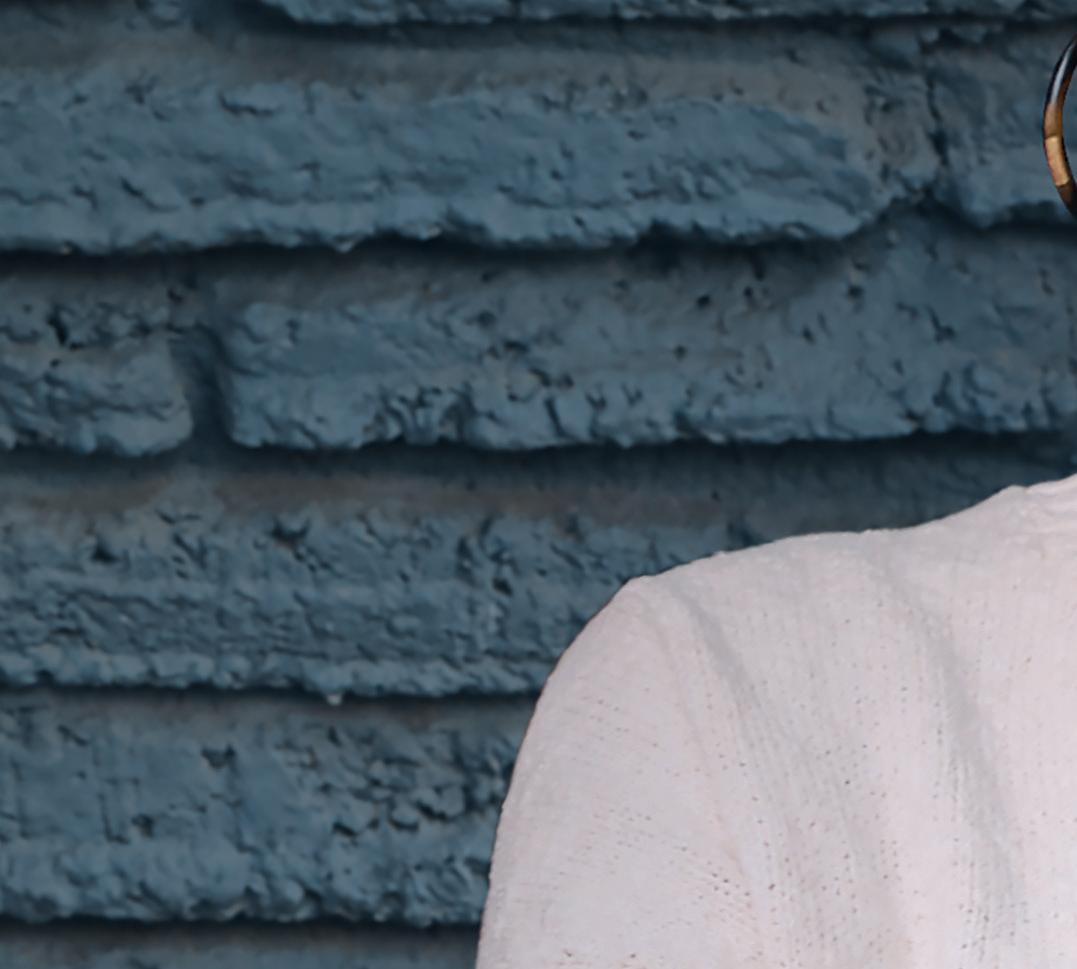
Study Reveals Barriers to Mental Health for Black and Latina Women...continued from page 7

discrimination. Another 59 % of Black women and 55 % of Latinas reported “assumptions people make about your income or level of education.” Forty percent of Latinas reported discrimination based on “assumptions about their ability to communicate in English” and 28 % reported “assumptions about your documentation of immigration

status.” Several other types of discrimination were reported, particularly relating to class, faith, size, and accent.


“Our research draws a direct line between the challenges in accessing mental health care for Latinas and Black women to the shortage of mental health professionals that share our backgrounds,” said Helen Torres,


CEO of HOPE. “The data is a call to action for healthcare providers and educational institutions to address the negative impacts of a healthcare workforce that does not represent the communities it serves. We must take steps to close the representation gap and provide better care to all.”
Study Reveals Barriers to Mental Health for Black and Latina Women...continued
Nearly half of respondents reported difficulty finding access to a mental health provider. Fifty-seven percent of Black or African American women and 38 % of Latina women said that it was extremely important or very important to have providers of the same background, but more than half said it is difficult to find a provider who shares their values or comes from a similar background. According to the Medical Board of California, only four percent of active psychiatrists practicing in California are Latino and only two percent are Black.
The ability to find a therapist with shared values and offering low-cost services were the most commonly reported barriers, though many also reported difficulty finding providers and services covered by their
insurance. Insurance acceptance was the most documented problem across all age groups, underscoring the widespread unaffordability of mental health care.
Disparities in women’s health are well documented at almost every level of health care. Mental health is no different.
The mental health crisis is not specific to adults. Suicide is the second leading cause of death among people aged 1519, according to a 2019 study on mortality. Suicide rates among Black youth have been rising for more than a decade, most sharply among Black girls. According to a 2021 report, approximately one third of young Latinas seriously contemplate suicide.


Long-existing disparities in maternal health are also present
with relation to mental health. Women of color suffer from higher rates of postpartum depression compared to White women. They also have a lower rate of screening and treatment for post-partum mood disorders. The study recommended increased funding to address the barriers to getting adequate care, development of programs, scholarships and financial aid to increase the pipeline of Black women and Latinas in mental health related fields, which, experts say, will increase the number of mental health advocates and promotors who can work to help women navigate the system, and expand awareness among communities of color about the benefits of seeking help or support when facing mental health challenges.
Blatter won re-election easily, Chris Dagonas reported that a mysterious Middle Eastern broker bribed FIFA executives $50,000 each to vote for him.
“Among other accusations, the American and British investigation team concluded that FIFA executives had accepted bribes from governments and corporations, did little to end racism in the sport, forced alcohol back into Brazilian stadiums, and passively accepted the deaths of over a thousand migrant workers in Qatar,” Dagonas wrote.
So, while the players are heroes to millions of fans with their talent and devotion to the game, reporting shows that FIFA executives have been gaming the system for their own benefit for years.
Still the game inspires new players all the time.
World Cup a window to the world
Take Tim Weah, for instance. His father, George, was a famous footballer from Liberia and later played for Cameroon and, as a pro, played for Chelsea FC, one
of England’s top soccer teams. In 1995, he won the prestigious Ballon d’Or, the trophy given every year to the world’s best player. But Weah senior never played in the World Cup.
In 2019, Weah senior was elected president of Liberia, a nation founded by former African American slaves. His son, Tim, is a forward on the U.S. squad in the 2022 World Cup. Young Weah scored the only goal in the U.S. win over Wales.
The World Cup brings out old rivalries, revenge matches, and with so many good players, it has become easier for small teams to beat big teams like Japan’s win over Spain last week. That upset knocked Germany, with four World Cup trophies, out of the tournament.
But Anchang says the game also offers an important window onto global migration patterns and a platform for international diplomacy.
Players like Weah or U.S. midfielder Yunus Musah — born in the U.S. to Ghanaian parents
— reflect growing diaspora communities in the U.S., notes Anchang.
“There is always going to be tension. I’m going to beat you, or you will beat me,” he adds.
“But say, for instance, if the USA were to do a friendly match with Iran, it will bring those people together… and that exchange is always good in terms of encouraging tolerance.”
Indeed, following the U.S. team’s defeat of Iran — whose players drew attention during an earlier match for refusing to sing the Iranian national anthem in solidarity with protestors demanding greater freedom and gender equality — American defensive player Antonee Robinson was lauded for embracing a teary-eyed Ramin Rezaeian.
The American team lost to the Netherlands on Saturday and is out of the competition. The panel predicted powerhouses Brazil, Argentina, or France would become the 2022 World Cup champion.
Page 8 Thursday, December 08, 2022 STATE/POLITICAL NEWS/ADVERTISING continued in next 3 columns Down payment assistance and gift funds have limited availability. Some restrictions may apply. All borrowers are subject to credit approval. Programs subject to change without notice. Underwriting terms and conditions apply. Equal Housing Lender Member FDIC A mortgage built for you, because we’re close to you. That’s the power of the Human Interest Rate. Desert Community Bank is in your neighborhood, so we understand your unique needs when it comes to financing a home: • Low to no down payment mortgage options • Specialty area grant and gift programs • Down payment assistance available Visit dcbk.org/newhome or call 760-794-7707 210195 DCB SAN BERNARDINO PHONE UPDATE 6X105 APP: InDesign CC KEYLINE TRIM: 6w x 10.5h OPER: nb KEYLINE LIVE: PROOF #: 1 KEYLINE BLEED: SCALE: 100% FONTS: Surveyor, Myriad Pro, Proxima COLOR: 4/C PUBLICATION: San Bernardino News 2/4/21 issue 210195_DCB_SAN_BERNARDINO_PHONE_UPDATE_6x105.indd 1 1/19/21 1:23 PM Emancipation review...continued from page 6
Global Divisions, Political Scandals Can’t Diminish World Cup’s Enduring Appeal... continued from page 4
P R O J E C T F A I R Forum to discuss adverse conditions facing historically marginalized students in school systems. Community Gathering Fractured systems existing in school districts mandated to Assess toxic environments and begin Intervention to stop an assault on young lives and produce Remedies to aid in recovery Topic: Parent Powered Education Guest Speaker: Dr. Joseph Marshall The Omega Boys Club, San Francisco, CA Topic: The Impacts of Racism on Mental Health Guest Speaker: Michael Williford & VVHUSD Mental Health Victor Valley Union High School District, Victorville, CA DATE: Saturday, December 17, 2022 TIME: 1:00 PM – 3:00 PM LOCATION: Greentree Inn 14173 Green Tree Blvd Victorville, CA 92394 ! No Justice No Peace ! Add’l Info: 909-991-4959 (RSVP)



 By Akil Bello and Harry Feder | The AFRO
By Akil Bello and Harry Feder | The AFRO





 By
By










































 Maxim Elramsisy | California Black Media
Maxim Elramsisy | California Black Media

























